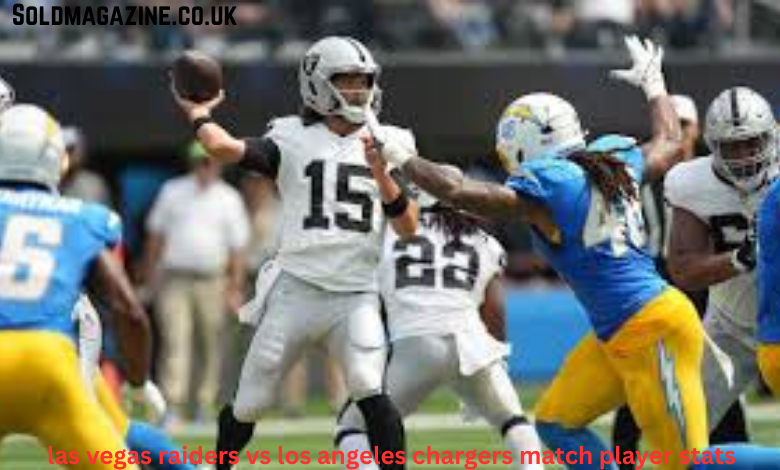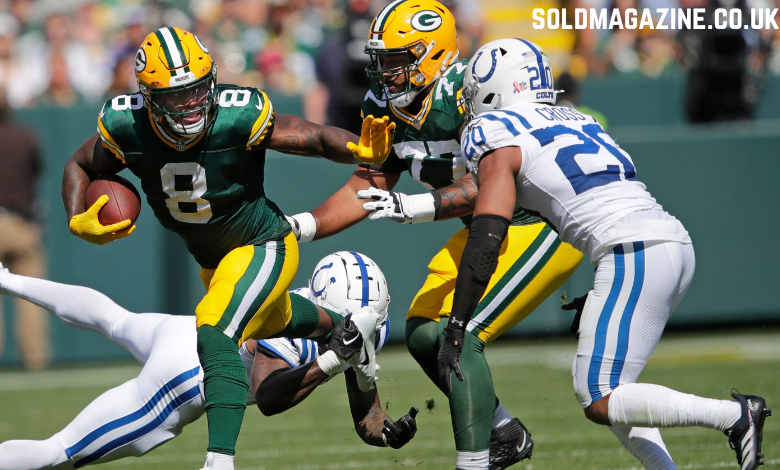Introduction
The Los Angeles Chargers faced off against the Las Vegas Raiders in a highly anticipated matchup, showcasing contrasting team dynamics and player performances. The game ended with a decisive 34-20 victory for the Chargers, highlighting their superior offensive efficiency, solid passing game, and better overall execution across key statistical areas. In this analysis, we will break down the key player statistics from the game and examine what contributed to the Chargers’ triumph over the Raiders.
Team Overview
Before diving into the individual player stats, let’s first take a quick glance at the overall performance of both teams during the game.
Los Angeles Chargers:
- Record: 11-6, 6-3 away
- Final Score: 34
- Offensive Highlights:
- Total yards: 473
- Passing yards: 336
- Rushing yards: 137
- Time of possession: 38:58
Las Vegas Raiders:
- Record: 4-13, 2-6 home
- Final Score: 20
- Offensive Highlights:
- Total yards: 264
- Passing yards: 225
- Rushing yards: 39
- Time of possession: 21:02
Offensive Performance Breakdown
Passing Game
The passing game was a focal point for both teams. The Chargers’ quarterback was efficient, completing 28 of 36 attempts for 336 yards, averaging 9.1 yards per pass. This high yards-per-attempt figure indicated that the Chargers were able to move the ball downfield effectively. Notably, the Chargers did not throw an interception, showcasing a clean passing performance.
In contrast, the Raiders’ quarterback completed 25 of 36 passes for 225 yards, averaging only 6.3 yards per attempt. While the passing game did keep the Raiders in the game, their relatively low yards per pass and the interception thrown were crucial in hindering their comeback efforts. The interception could have been a critical turning point, especially as it stalled any momentum the Raiders were attempting to build.
One key statistic to highlight is the Chargers’ success in maintaining a balanced attack. Their quarterback’s 28 completions came with a high level of efficiency, ensuring that the passing game opened up opportunities for the ground game.
Rushing Game
The Chargers had the upper hand in the running game, accumulating 137 yards on 35 attempts. With an average of 3.9 yards per rush, the Chargers’ ground attack wore down the Raiders’ defense. In particular, the Chargers’ ability to establish a consistent rushing attack allowed them to control the tempo of the game and limit the time the Raiders’ offense had the ball.
The Raiders, on the other hand, struggled significantly on the ground, finishing with just 39 rushing yards on 12 attempts. Their yards per rush was marginally lower at 3.3 yards per attempt. This poor rushing performance limited the Raiders’ offensive balance, forcing them to rely heavily on their passing game, which was not as effective as the Chargers’ attack.
Key Statistical Insights
First Downs
The Chargers dominated in terms of first downs, registering 26 compared to the Raiders’ 16. This indicates that the Chargers were able to sustain drives and convert key situations, while the Raiders struggled to consistently move the chains. Of the 26 first downs, the Chargers earned 13 via the passing game and 11 on the ground. The balance between passing and rushing first downs allowed the Chargers to control the flow of the game, leaving the Raiders with limited opportunities to capitalize on their offensive possessions.
Third and Fourth Down Efficiency
The Chargers’ success on third down was another major factor in their win. They converted 7 of 14 third-down attempts (50%), showing a high level of efficiency in maintaining possession. In comparison, the Raiders struggled with only 2 conversions out of 9 attempts (22%). This marked difference in third-down success rates was a key factor in the Chargers’ superior time of possession.
On fourth down, the Chargers were a perfect 1-for-1, whereas the Raiders converted 1 out of 2 attempts. While the Raiders showed some resilience by attempting to convert on fourth down, the overall disparity in third-down conversions gave the Chargers a significant advantage in controlling the game.
Yards Per Play
Another telling statistic was the yards per play, where the Chargers averaged 6.6 yards per play compared to the Raiders’ 5.5. This difference indicates that the Chargers were more efficient in terms of gaining yardage per snap, which further highlights their ability to execute both the passing and rushing aspects of their offense with higher efficiency than the Raiders.
Red Zone Efficiency
Red zone efficiency proved to be a deciding factor in the final score. The Chargers converted 3 out of 6 red zone trips into touchdowns, while the Raiders converted only 1 out of 2. This underlines the Chargers’ ability to capitalize on their opportunities near the end zone, as opposed to the Raiders, who struggled to punch the ball in when it mattered most.
Turnovers and Penalties
Turnovers
Turnovers were an area where the Chargers excelled, as they committed zero turnovers during the game. In contrast, the Raiders threw an interception, which was a pivotal moment in the game. While turnovers alone did not determine the outcome, the Raiders’ interception hindered any chance of mounting a comeback, especially in a game where every possession counted.
Penalties
The penalty statistics were relatively favorable for the Raiders, who were flagged 3 times for 28 yards, compared to the Chargers’ 7 penalties for 40 yards. However, despite fewer penalties, the Raiders still struggled to maintain consistency on offense, particularly in critical situations like third downs and red zone trips, which limited their scoring opportunities.
Defensive and Special Teams Contributions
Both teams played solid defense, but the Chargers were the more effective unit. Despite the Raiders’ inability to generate a consistent pass rush or create turnovers, they held their own in limiting the Chargers’ scoring drives. However, the Chargers’ defense was more effective overall, particularly in preventing the Raiders from capitalizing on key moments, such as in the red zone. Special teams were not a major factor in the game, with neither team scoring any defensive or special teams touchdowns. However, the Chargers’ ability to maintain control of the game, especially with a dominant time of possession, allowed them to dictate the game’s pace and limit the Raiders’ scoring chances.
Conclusion
The Los Angeles Chargers showcased a more well-rounded and efficient performance against the Las Vegas Raiders in this game. From their passing and rushing attacks to their third-down and red zone efficiency, the Chargers consistently outperformed the Raiders in nearly every statistical category. Their superior offensive execution, coupled with the Raiders’ struggles in both the passing and running games, contributed to a decisive 34-20 victory. While both teams had moments of success, the Chargers’ ability to convert on third downs, sustain drives, and make plays in the red zone proved to be the difference in this contest. The Raiders, on the other hand, were hindered by their inability to effectively move the ball and generate turnovers. Moving forward, both teams will need to address their respective weaknesses, with the Chargers looking to build on their offensive efficiency and the Raiders needing to find more balance in their game.
FAQS
1. Who won the Las Vegas Raiders vs Los Angeles Chargers match?
The Los Angeles Chargers won 34-20.
2. What was the key difference in the game?
The Chargers’ superior passing game and third-down efficiency were crucial in their victory.
3. How did the Raiders perform in rushing?
The Raiders struggled, only gaining 39 rushing yards on 12 attempts.
4. How many turnovers did each team have?
The Chargers had no turnovers, while the Raiders threw 1 interception.
5. What was the time of possession for both teams?
The Chargers controlled the ball for 38:58, while the Raiders had it for 21:02.



